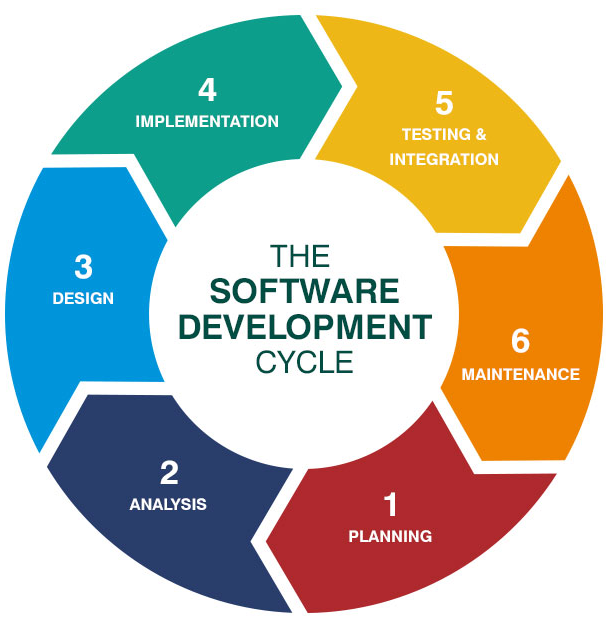Software Development Lifecycle
The Software Development Life Cycle (SDLC) is a structured process used for developing software applications. It outlines the stages involved in the creation and maintenance of software, ensuring the software is high quality, delivered on time, and meets user requirements.
At Shulyn Technologies, we follow a structured approach to software development, ensuring that each project is executed efficiently, meets client requirements, and maintains the highest quality standards. Our SDLC methodology is a comprehensive framework that guides our development process from initial planning to final delivery and support.

Here’s a breakdown of the SDLC phases:
Requirement Gathering and Analysis
This phase involves working closely with stakeholders (customers, business analysts, and project managers) to gather all the requirements and document them. It’s about understanding the problem and defining clear objectives, expectations, and functionalities for the software.
Planning & Design
In this phase, software architects and designers translate the requirements into a blueprint for building the software. This includes designing the software architecture, database design, user interfaces, and system interfaces.
Development
Developers start coding the software according to the design specifications. The focus here is on translating the design into functional code. Development can be done in multiple programming languages, frameworks, and environments, depending on the project needs.
Testing & QA
After the software has been developed, it is tested to identify bugs, errors, and other issues. Various testing types are performed (unit testing, integration testing, system testing, user acceptance testing). The goal is to verify that the software works as intended and meets all user requirements.
Deployment
After the software passes testing, it is deployed to the live environment where it will be used by the end-users. This can be done in stages (e.g., beta release or full launch) to ensure a smooth transition. If the software is web-based, it may be deployed to servers or cloud infrastructure.
Maintenance & Support
Once the software is in use, it requires ongoing support and maintenance. This includes fixing any issues that arise, applying updates, and adding new features based on user feedback. Continuous monitoring and troubleshooting are essential during this phase.
